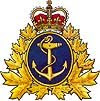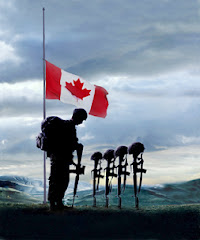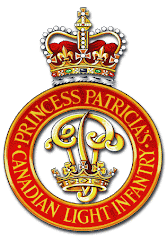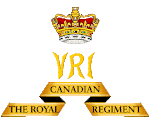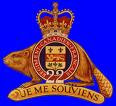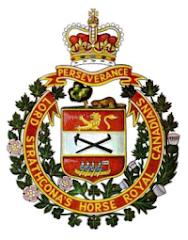
I initially posted this entry on 27 January 2009. It seemed like an appropriate time of year for it to make it's re-appearance, considering the e-mails we've been receiving of late...
I received one of those rare calls this morning, which make this job worthwhile. It was a gentleman from Alberta who had just purchased a 42-foot boat in Florida. He was looking for information and guidance with regards to what he should do next and intimated that he was thinking about cruising Bahamian waters.
Finally, someone who actually wanted some information, rather than trying to impress me by how much he didn't know. We first covered vessel registration, as licensing would be a no-go for this one. I then asked him about the electronics fit on the boat. What it had as far as navigation gear, radios, etc. He informed me that the boat had a complete navigational suite, as well as a marine VHF radio.
I then informed him that for as much as many States didn't require boaters to have a license to operate a marine VHF radio, we here in Canada required a Restricted Operator's Certificate (Maritime). In American waters, they actually require Canadian boaters to have a Radio Station License, which conversely are NOT required here in Canada. I also strongly suggested that he verify with the countries in whose waters he intended to cruise, as to what their regulations and requirements were.
We then discussed whether his marine VHF radio had DSC capability or not. I explained how the system worked (simply keying a button on the receiver transmits your position to the chain of COSPAS-SARSAT satellites which orbit the earth geosynchronously...) and what a lifesaver it could be under certain dire circumstances. I told him that I didn't know what his competency level was with regards to navigating or chart reading went.
I proceded to describe the Canadian Hydrographic Service, as well as the products they offered: charts, list of lights, buoys and signals, the sailing directions to accompany various charts and other associated publications. I briefly touched on the fact that there had been people in that area who had sailed for the Bahamas, only to find themselves being accosted by a Cuban gunboat... (our Toronto brainchild from a previous post...). I further suggested communicating directly with the US and Bahamian authorities, for detailed information on cruising in their waters. They will be able to provide him with specific information on their coast guard, harbour authorities, communications procedures, radio channelization, customs clearance, etc...
There are many cruising websites, government and private, which also offer excellent and complete information on these very procedures. I started thinking about what if I were sailing the open ocean, cruising through the territorial waters of the Southern Seas. What would I have aboard?
Knowing what I know now about how the world works, what would I haul along to keep myself safe and informed? What kind of kit would I have on my boat, to see me through a multi-month voyage around the Caribbean? I made up a short list of absolutely must-have equipment.
The boat itself.
Lesson one: The sea is not a place to be caught unprepared. The ocean floor is littered with the countless wrecks of those foolish enough to believe that they could challenge it's might. Just when you think you can run from one island chain to the next and keep ahead of that leaden line of clouds, nature has a way of proving you wrong in the worst of ways. Your vessel is the very first consideration when it comes to the preservation of your safety at sea. I would say that a 42-foot vessel would be a minimum size for such ventures, whether you prefer a sloop, a ketch, or a power cruiser.
If a sailboat, one would have to ensure that it also had a secondary means of propulsion, such as a reliable marine diesel engine. This would provide not only motive power should you be becalmed, but also a source for powering your 12-24VDC battery bank, on which all your electronics and electrical appliances work.
Hard-mounted.
On the vessel itself, I would make sure I had one of the following critical instruments. The make, model and associated cost are merely examples:
The reason for DSC-capable marine VHF radios:
ICOM IC-M710 MF/HF Marine Transceiver: Range: Thousands of nautical miles. ($1,529.00 USD)
COM MXA-5000 AIS Receiver: ($480.00 USD)
ICOM IC-MR-1000TII 'India'-Band navigational radar (48nm): ($3,595.00 USD)
FURUNO GP-7000/NT GPS navigation system: ($1,380.00)
KANNAD 406Mhz Digital Auto-EPIRB - Distress Beacon: ($924.00 USD)
NOTE: The older analog 121.5Mhz EPIRBS are now phased out. They are no longer operational (as of 01 February 2009).
Hard-mounted 6-man, auto-deploying Canister type Liferaft, w/hydrostatic release. ($1,859.99 USD).
I would of course also ensure that I had a copy of the paper charts and accompanying sailing directions for the waters I intended to transit. Having one's electronic navigational equipment die, without being able to navigate 'handraulically' (old school), is the same as having no navigation gear at all. You are lost. And being lost at sea is not something you ever want to be.
So you would also need a sextant (and know how to use it...), a set of chartworking tools (compasses, parallel rulers, dividers, etc...).
Self-protection.
Because life is not all lollipops and sunshine away from our home shores, I would make sure I also had one of each of the following onboard and readly accessible:
Wilson M4-T tactical carbine: ($1,995.00 USD) Ammo: 5.56x45mm FMJ NATO ball ammo. 3x30-round box magazine.
Light, compact, large magazine capacity and ease of manoeuvrability in tight quarters, make this a very versatile weapon for both stand-off and close-in engagements. More effective on soft targets.
Or perhaps as a more preferable alternative:
Fulton Armory/Garand M-14 rifle: ($2,499.95 USD) Ammo: 7.62x51mm (.308 Win.) NATO FMJ round. 3x20-round box magazine.
This weapon gives a very good long range, stand-off capability. It is highly accurate and possesses a round which will inflict heavy damage not only on soft targets (bad guys), but also on their boats/vehicles. When dealing with 'bad guys', the further away you can engage them, the better off you are...
Beretta 92_FS Brigadier INOX: ($799.99 USD) Ammo: 9mm 124gr. HPJ (+P) Remington Golden Saber Box. 6x15-round magazine.
This weapon is for very close-in defensive or offensive work, hence the choice of the 124gr. jacketed hollow-point ammo, to avoid the round blowing through soft targets and more to the point, to ensure that the bullet delivers all of it's kinetic energy inside the target.
Mossberg M500 Mariner (J.I.C.), stainless steel: ($547.00 USD) Ammo: 12ga. 00 buckshot, #4 Birdshot and SSG.
The perfect boarding (or anti-boarding...) weapon. Capable of inflicting exceedingly heavy damage on both soft targets and boats, notably when employing the SSG rounds.
This weapon would be used in conjunction with a SS15L Eagle Shotgun Shell Sling.
************************************************
It goes without saying that it is imperative that you communicate with the local authorities to discover:
a) whether they allow weapons in their territorial waters (prior to sailing there, preferably...),
b) to advise them that you do in fact have weapons onboard. In these days of rampant piracy, they would probably be surprised if you didn't have any means of self-protection. NEVER be deceitful when it comes to communicating with foreign officials. It's the absolute fastest way to a jail cell...
c) In Cuba, you will be required to turn over your weapons on arrival and they will be returned to you upon your departure. In the Bahamas and in the US territorial waters off Florida, you are permitted to have a firearm onboard. You must provide the weapon's manufacturer, the serial number and an exact count of ammunition to the Customs officials. In the Bahamas, you may not bring the weapon off the boat unless you have arranged a permit from the Bahamian Police well ahead of time.
Do ensure your weapons are stored under lock and key. The local authorities are very serious (anal) when it comes to enforcing these regulations. Don't mess with them... When at sea or at anchorage, I would ensure that they were within reach at all times, locked and loaded.
This list is not exhaustive, as I would also ensure that I had a multi-person liferaft hard-mounted to the upper deck (auto-release model), SOLAS grade lifejackets, flares (which can also be used as a defensive weapon to deter would-be boarders), boat hooks and fire extinguishers. Besides the sea itself, a fire at sea is your deadliest enemy. In my humble opinion, NO PERSON should put to sea without first having been trained in firefighting techniques.
The storage of provisions onboard any type of vessel is a chore that demands a variety of skills. Much of this depends on the type of onboard appliances and space you are either blessed or cursed with. On land, you have such luxuries as fridges and freezers. They are plugged into a wall socket and forgotten. Taken for granted, if you will.
At sea, everything functions in the world of 12-24VDC. If you are fortunate, your vessel will have a galley with some storage features to it. Do not rely on these to hold what you will actually require for sustaining yourself at sea, unless you are only making day runs in coastal waters. Your eating habits will change radically while asea, I guarantee it...
To give an idea of some of the considerations involved with provisioning a boat which is about to get underway, check out these links below:
If I've provided a number of links on this particular subject, it's because it is in fact that important. For anyone who has seen the WW2 submarine movie "Das Boot" (The Boat), you no doubt recall them merrily provisioning the boat before sailing out from the submarine pens in Lorient, France. They had produce lining and cramming every conceivable nook and cranny onboard that sub. I can personally vouch for the authenticity of this scenario! It is an exercise in creativity...
And so equipped, I would be pretty much set to deal with any situation which might arise. Of course I'd probably want to have more than just myself onboard. The solitude of life under sail might be the perfect tonic for a select few, but for anyone else it would surely lead to madness. Besides, you're going to need someone else to stand watches with you while underway. You don't simply put the boat on auto-pilot and go for a good night's sleep...
As a popular Navy saying would have it: "A collision at sea can ruin your whole day!"
Collisions are always a real threat, whether you're on the high seas, sailing in coastal waters, in reduced visibility, or entering/leaving port. Risk of collisions include other vessels, sea life and running aground. Someone has to be on watch at all times, even when at anchor. ('Especially' at anchor in foreign waters...). Your safety and your very life may well depend on it. Sailing is a wonderful way to see the world and many of the wonders in it. Like anything else which involves a certain amount of risk, you just have to do your homework and understand explicitly what you're getting into."













